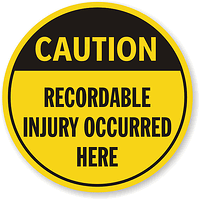Today's blog article comes with a great infographic to sum up its information. Courtesy of the Editors at Best Choice Reviews. They write great articles on a multitude of subjects from fitness to personal shopping to electronics/technology. Check them out!
Anyways, today's subject will be "Everyday Ergonomics." Thank you again Best Choice Reviews for providing this information!
Everyday Ergonomics
Ergonomics is the science of efficient work. Use our guide to promote health and focus at home, on the road, and in the office.
Commuting
The average commute is 25.5 minutes, or 51 minutes a day. And 8.1% of Americans commute for an hour or more both ways.[1] That’s a long time to mistreat your back and neck.
Train or bus?[5]
Essentials:
- Loose clothes
- Comfortable shoes
- Feet flat
- Use railing to balance
Car?[4]
Essentials:
- Base of your spine touching back of the seat.
- Rolled towel, or some form of support filling the gap between mid rib cage area and seat
- Don’t slump
- Lift your back up
- Adjust headrest and tilt head back onto it
- It takes time to adjust to sitting correctly. With practice it will feel comfortable.
Back pain is the second most common reason for missed work. Don’t ruin your day before it starts.[9]
Work
Workplace health is a marathon, not a sprint. That doesn’t mean that you aren’t an “industrial athlete.” Let us coach you into the right place.
Work-space: [7][6][10]
- Monitor 15 degrees above eye level horizon is easiest on eyes and neck.
- Tilt monitor back slightly.
- Feet flat on floor.
- Lower back supported.
- Monitor one arms’ length away.
- Forearms and hands in straight line.
- Should be comfortable to look at the center of the screen for prolonged periods.
- Lighting should only be as bright as the room’s lighting.
- Avoid glare from the sun.
Habits:[8]
- Get up and walk/ stretch at least once an hour.
- Talk to colleagues in person instead of sending intra-office emails.
- Take the stairs.
- Hold “walking meetings.”
- Walk to a farther bathroom.
The Average worker spends 5 hours 41 minutes sitting at work. Leading to higher rate of sedentary lifestyle, decreased mental stability, and increased muskulo-skeletal problems.[11]
Almost 60% of work related injuries can be avoided with proper ergonomics. Why risk it?[9]
Luggage
- Push, don’t pull rolling bags.
- Use bags with two straps to spread weight equally across body.
- Choose longer straps when using single strap bags and drape across body on the opposite shoulder.
- Only carry what you need.
Manual Labor [3]
- Use knee pads for prolonged kneeling
- Mix up repetitive actions
- Store heavy items within reach (see “work zone”)
Core concepts
In 1700 Ramazzini, a Paduan professor of medicine, outlined the importance of neutral posture and the “work zone” in maintaining muskulo-skeletal health. [12]
We’ve known about ergonomics for hundreds of years. It’s up to you to change.
The Neutral Posture [2]
The position where each joint is resting. Least tension on nerves, muscles, tendons, and bones.
Often seen in astronauts under conditions of weightlessness.
Fingers: gently curved, not spread apart.
Wrists: in line with forearm
Forearms: With thumb up.
Elbows: Bent from 90-110 degrees. Close to torso.
Upper Arms: hangs straight down
Shoulders: resting. not up, down, forward, or back.
Neck: balanced on the spinal column.
Spine: an ‘s’ shape. Upper region bends out. Lower region gently bends in.
Lower body: hip and knee joints slightly bent.
The greater the deviation from the neutral posture, the greater the risk of injury and discomfort.
Cumulative trauma disorders develop over weeks, months, or years from the repeated stress on a particular body part. Start changing your habits now.
Repetitive motion disorders are muscular ailments.
Examples: Carpel Tunnel Syndrome, Dequervain’s Disease,Tendinitis, Trigger Finger
The “work zone” [3]
The best work zone:
- Never do heavy lifting outside of it.
- As far forward as your wrist with arms slightly bent.
- As wide as your shoulders.
- Upper level at about heart height.
- Lower level at about waist height.
The “ok” work zone:
- As far forward as your hand with arm outstretched.
- A foot to either side of shoulders.
- Upper level at shoulder height.
- Lower level at fingertips when arms relaxed at sides.
If you could make the choice to live without pain. Wouldn’t you make the choice everyday?
Citations
- http://www.census.gov/hhes/commuting/files/2012/ACS-20.pdf
- http://www.oehc.uchc.edu/ergo_neutralposture.asp
- https://www.osha.gov/ergonomics/guidelines/retailgrocery/retailgrocery.html#stocking
- http://www.wikihow.com/Sit-in-a-Car-Without-Back-Pain
- http://www.chiropractic-uk.co.uk/gfx/uploads/member%20area/Posture%20sheets/Mind%20your%20posture%20-%20commuting.pdf
- http://ergocanada.com/ergo/monitors/monitor_height_guidelines.html
- http://www.ors.od.nih.gov/sr/dohs/Documents/ORS_Ergonomics_Poster_Rd5.pdf
- http://www.forbes.com/sites/alisongriswold/2012/06/12/to-work-better-just-get-up-from-your-desk/
- http://www.nclabor.com/osha/etta/A_to_Z_Topics/ergo.pdf
- http://www.gatoroffice.com/monitor_ergonomics.htm
- http://www.sciencedaily.com/releases/2012/01/120113210203.htm
- http://ergonomenon.com/ergonomics-articles/bernardino-ramazzini-the-first-ergonomist-and-what-have-we-learned-from-him/

 Increase penalties for law-breakers
Increase penalties for law-breakers site
site